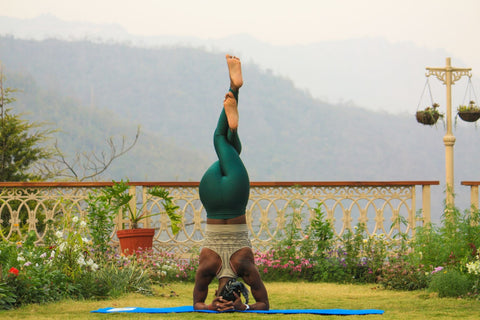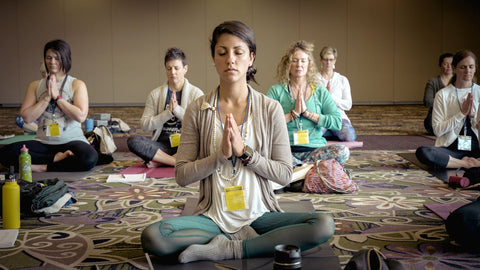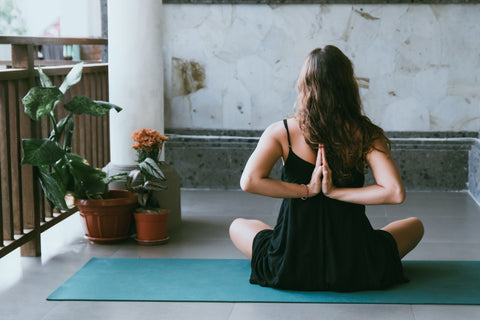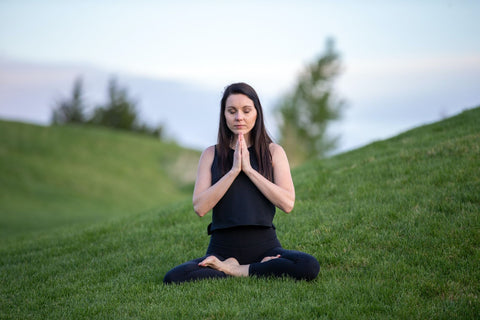
With more than 64 million people hitting the road, track, or trail as of the most recent annual statistics, running is one of the most popular forms of exercise in the US. Running, with an average of 600+ calories burned per hour, is also one of the best forms of exercise for weight loss.
The problem for those who are avid runners lies in the potential for injury. If you focus all of your time and energy on your next run you put yourself at risk for repetitive use injuries, joint pain, and lower back pain. Too much running, without complementary movements, can also create imbalances in the body that put you at risk for soft tissue injuries.
Thankfully, preventing running injuries is relatively easy if you take some additional time to improve your strength and flexibility with an appropriate course of cross training. If avid runners add regular yoga sessions to their fitness protocol, they will build the strong, pliable muscles necessary to tackle mile after mile each week without unnecessary pain and suffering.
Yoga practice can seem intimidating for the new yogi, but truth be told, there are plenty of beginner poses that you can start performing today (with no special equipment) that will build the strength and flexibility necessary to help you run injury free. Let’s take a look at some of the very best below.

Low Lunge
When performed properly, the low lunge opens up and stretches the hips and ankles; it strengthens the quadriceps, hamstrings, and calves and it improves balance. During your first several yoga workouts, you may need to keep your arms down by your sides and hands close to the ground for balance while getting into position and holding the pose. With practice though, you balance and stability will increase and you’ll begin to reap even greater benefits from the low lunge.

Pigeon Pose
Pigeon pose is a fantastic posture for an all around, lower body stretch. Holding this pose for 5-10 full breaths on boths sides will open up the hips, groin, hamstrings, quadriceps, and ankles. This pose is essential for runners who want to reap the full benefit of a challenging run without increasing their risk of injury from strength imbalances.
If you are new to yoga or have limited flexibility, you can keep your arms to your side as described above for balance. Once you are comfortable with the pose you can raise your arms directly in front of you or above your head to make the pose a little more challenging.

Downward Facing Dog
Lots of running, regardless the pace, causes tightness in the hamstrings - this is one of the “imbalances” that can lead to muscle pulls or strains. The downward facing dog puts you in a position to get a full stretch in your hamstrings, loosening tight muscles and undoing any potential damage done during your running workout. This pose also stretches the ankles, which can become tight from the stresses of running on the road or on a track.
In addition to the powerful lower body benefits, downward facing dog also strengthens the muscles of the arms, chest, back and core. Your legs seem to do most of the work while you are out on a run, but your arms, shoulders, chest and upper back all play critical roles in maintaining proper running form for efficient movement. Without a strong core for proper posture and a strong upper body to help propel you forward, you can come away from your run with unnecessary aches and pains that can impact future workouts.

Upward Facing Dog
The upward facing dog delivers many of the same benefits as downward facing dog, you get a deep hamstring stretch along with upper body strength building, but with this pose you also strengthen and open up your lower back. Those who enjoy running for longer distances can experience low back pain that stays with them long after their workout is finished. By focusing on lengthening and loosening the spine and stretching and strengthening the lower back with upward facing dog, you can enjoy longer running workouts without the post run pain.

Plank
We talked about the importance of a strong core for running above, and there are few exercises out there that are better than the plank for developing a strong core. Perform this pose on your hands, in the top push up position and you’ll also strengthen your shoulders, chest and upper back.
Even though the posture looks very simple if you are new to strength training, the plank can be a little intense. Make sure you maintain proper form and focused breathing throughout in order to maximize benefit without risking injury.
Running may be the focal point of your fitness protocol, but if it is your only avenue of movement you can run into physical issues. Adding even a small amount of cross training to improve strength and flexibility through yoga can have a profound impact on your running form and performance while at the same time having a positive impact on your overall health and well being.






